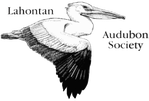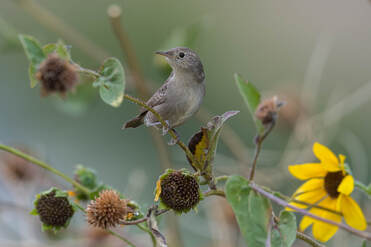Annuals & perennials included in this guide:
The table below contains a list of annuals and perennials native to Northern Nevada and the surrounding areas. The table also has a photo, brief description and a list of the birds attracted to the plant. The information from this table was taken from the National Audubon Native Plant Finder. If you would like a list of plants more specific to your zip code, use the Native Plant Finder and input your zip code for your own list of plants. Plants can have multiple common names but their scientific names are standardized. Some people prefer to find plants by their scientific name, while others prefer common. That is why we alternatively listed the plants each of the handouts in alphabetical order by their common name. See the list above to find plants in the guide by their scientific name.
Photo of House Wren Courtesy of Jeff Bleam
Click to set custom HTML
|
|||||||||||||||||||||||||||||||||||||||||||||||||||||||||||||||||||||||||||||||||||||


